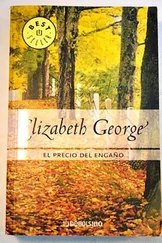* * *
Rubber, too, once played a major economic role. The source of great but brief wealth, Amazon rubber suffered a blow in 1910 when the plantations in Malaya and the Dutch East Indies began to outproduce and undersell it in the world market. The towns that had flourished in the valley of the Amazon were rapidly transformed into dead or dying communities. The city of Manaus, situated near the meeting point of the Amazon and the Rio Negro, was the rubber capital of the world until the collapse of the market. Rich and luxurious, with a huge opera house, it imported troops of singers and dancers. Large ships made it a regular port of call. To the east of Manaus, Henry Ford established experimental plantations, Fordlândia and Belterra, in the late 1920s and early 1930s, but, finding the project unprofitable, abandoned it. Today owned by the government, the project still produces a small amount of rubber.
During World War II, when Japan seized the plantations of Malaya and the Dutch East Indies, there was a brief resuscitation in Amazonian rubber. But Brazil today imports some $40 million worth of Asian rubber each year. The Amazon, deprived of the market for its principal wealth, has also been attempting diversification in recent years. The area now produces substantial quantities of Brazil nuts, jute, lumber, sugar cane, and vegetable oils as well as manganese.
* * *
Like other Brazilian resources, lumber has had its brief fling, but it, too, has yet to reach its potential. In the Amazon basin alone, there are at least 5 trillion cubic feet of timber, and there are vast forests of prime woods in the south. One of the most attractive features of the national landscape is commonest in the States of Paraná and Santa Catarina — the groves of araucarias, the Brazilian pine tree. They are very tall trees with straight trunks and arched, bare branches terminating in characteristic cup-shaped bunches of needles. Besides being beautiful, the araucaria is extremely useful; its wood constitutes the principal wealth of the region in which it grows. So sought after was this wood that the government was forced to pass a law in 1942 prohibiting excessive cutting and providing for replanting.
With more than 600 known varieties, Brazil has more palm trees than any other country in the world. They are rich sources of fiber, oils, and fuel. From the leaves of the carnauba, an elegant, tall palm that flourishes only in northeast Brazil, comes a sticky deposit rather like beeswax which, when gathered, powdered, and melted by a difficult and primitive process, produces the famous carnauba wax. It was used in the manufacture of phonograph records, polishes, and varnishes. The carnauba is one of the principal economic supports of the States of Ceará, Piauí, and Maranhão, and the people of the dry sertão say that is the compensation given them by God for the scourge of drought — since when there is rain the palm produces no wax.
Tobacco is raised in most of Brazil, and has been for centuries an important trade merchandise for the slave dealers. It had developed into an industry in Bahia, whose cigars are famous and good enough to be compared with those of Cuba. Bahia cigarettes are also widely distributed, but the greatest number of cigarette factories is in the State of Rio Grande do Sul.
The European grape, introduced by Italian immigrants, grows very well in Rio Grande do Sul. The wine industry has developed rapidly and today Brazilians are proud of some of their wines, champagnes, and cognacs. In 1960 nearly 8 million gallons were exported to France. Also important to Rio Grande do Sul is wheat, although far from enough is produced to make Brazil self-sufficient. The country usually manages to produce enough corn, beans, and rice for domestic consumption.
Only recently has there been much interest in making use of Brazilian fruit for exportation or canning. Oranges are now exported on a large scale. Bananas, of which Brazil is the world’s largest grower, are principally grown in São Paulo. The cashew fruit of the northeast provides the valuable cashew nut, and the fruit is processed in the form of syrups and pastes. And then there is the guava. Guava paste, accompanied by cheese, is a standard dessert all over Latin America.
* * *
Brazil’s greatest mineral resource is iron. There are practically inexhaustible veins in the country, located mainly in the State of Minas. It is estimated that there are 65 billion tons of iron ore in Brazil, 35 per cent of the world’s total reserve. The lack of high-quality coking coal has until recently prevented the development of steel mills commensurate in number with the quantity of ore. However, the coal of Santa Catarina, although of an inferior quality, has been energetically exploited, and the result has been the great steel mills of Volta Redonda, whose construction began in 1942 with U.S. aid. Brazil’s iron and steel industry is now the largest industry in Latin America, and exploitation of the ore has barely begun.
The same is true of other mineral reserves. There are deposits of just about every known mineral, including precious and semiprecious stones, scattered throughout the country, some in vast quantities. Only with denser population in these areas and more specialized techniques will Brazil be able to profit from these hidden riches. In Espírito Santo and other areas the government is at present exploring layers of monazite sands rich in radioactive ores.
* * *
A matter of considerable controversy in Brazil is the extent of petroleum reserves. Some geologists have suggested that the vast sedimentary basins of the Amazon and Paraná, encompassing nearly 2 million square miles, contain extensive reserves. But so far only traces of oil have been found. Due to a fear of foreign exploitation, oil exploration and heavy oil production were restricted in 1953 to a single government monopoly, Petrobrás. Despite valiant wildcatting at a cost of some $50 million a year, Brazil produces only some 30 per cent of its own crude requirements, most of it from the wells in Bahia. And even if there are extensive reserves in the upper Amazon valley, geologists believe that they lie under rock and would present difficult and expensive problems. Transport would not be a problem, because of the nearness of the navigable Amazon. Throughout most of the country, however, transport is one of the basic problems which Brazil must solve before it can begin real exploitation of its truly magnificent resources. Today, Brazil has nearly 24,000 miles of railroads, but most of them are short-haul, east-west lines which penetrate inland only a short distance from the coast. Many of them are of different gauges, and there are few north-south connections in any event. The highway network still under construction will of course help to solve this problem.
Chapter 6. Unself-conscious Arts
The Brazilian of the interior owns almost nothing and has little cash income. He is not a “consumer”; he still makes most of the things he wears and uses. He lives close to the life of the Indian and the primitive African. These are some of the reasons why, once away from the coastal cities, the arts and handcrafts flourish in Brazil as they haven’t in the United States since colonial days. Since the man of the interior also has no entertainment (or hadn’t until the radio, now man’s alter ego in Brazil as everywhere else), he still makes his own: songs; ballads; dances; ancient, sometimes very elaborate, folk-plays and rituals; according to the seasons and the saints’ days. He weaves wool and cotton home-spun, plaits straw and wicker, makes pottery, carves. The richness and variety of these native arts owes much to the fact that they, too, like the people, are racially mixed. Portugese and Moorish, African and Indian, — and now in southern Brazil sometimes German, Italian, and Japanese, as well.
Читать дальше












